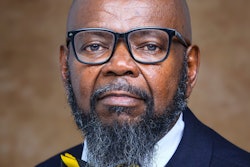A proposed crackdown on congressional earmarks may leave some minority-serving institutions, as well as traditionally White colleges, with less money this year.
Top U.S. House and Senate Democrats say they want a one-year moratorium on earmarks — the pet projects lawmakers insert into federal government spending bills. The pork barrel projects have come under increasing criticism as an example of federal spending grown out of control. Critics point to projects such as Alaska’s “bridge to nowhere” as an example of this excess, although colleges and universities also benefit when lawmakers insert pet projects for colleges that are funded without peer review.
“We will place a moratorium on all earmarks until a reformed process is put into place,” said a joint statement from U.S. Sen. Robert Byrd, D-W.Va., and U.S. Rep. David Obey, D-Wis., chairmen of the Senate and House Appropriations Committees, respectively.
If Democrats follow through with their plan, as expected, the plan would hurt large public research institutions with full-time lobbyists in the nation’s capital. But it also would harm smaller historically Black institutions, says Dr. Ronald Walters, director of the African American Leadership Institute at the University of Maryland.
“It is an issue, particularly for HBCUs,” Walters told Diverse. “This is the way a lot of funding goes to colleges and universities.”
An examination of proposed 2007 budget bills sheds some light on the moratorium’s potential impact. In the House, the Appropriations Committee approved a 2007 education bill last summer with several hundred earmarks for higher education. Since the bill never gained approval from the full House or Senate, the projects have yet to receive funding. However, several earmarks involve HBCUs or initiatives for minority students. Projects in that now stalled bill:
· $300,000 to Albany State University in Georgia to increase college success for minority males and non-traditional students;
· $200,000 for Livingston College in North Carolina for teacher training and mentoring of minority students;
· $300,000 to Virginia State University to develop an international economics program;
· $300,000 for Southern University at New Orleans for a minority science initiative; and
· $200,000 to Bowie State University in Maryland for a principals’ academy.
Lawmakers had included most of these projects as designated funds under the federal Fund for the Improvement of Education or the Fund for the Improvement of Postsecondary Education.
Likewise, the Senate Appropriations Committee last summer also approved education earmarks. The bill never gained final approval, but the committee recommended hundreds of appropriations, including:
· $100,000 to Lincoln University in Pennsylvania for campuswide technology upgrades;
· $400,000 to the National Association for Equal Opportunity in Higher Education for education and mentoring programs at Wilberforce University and Central State University in Ohio;
· $500,000 for Salish Kootenai College, a tribal institution in Pablo, Mont., for faculty and student recruitment; and
· $400,000 to Southwestern Indian Polytechnic Institute, also a tribal college, to expand training programs and purchase equipment.
There is still a chance that some of these projects may survive intact, however. The new Congress has yet to approve a 2007 education spending bill, and several advocates told Diverse it is possible higher education may get an exemption from this moratorium.
© Copyright 2005 by DiverseEducation.com



















